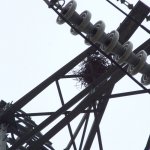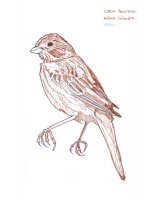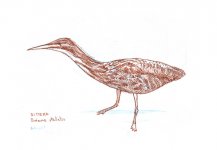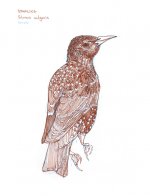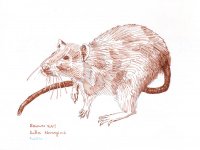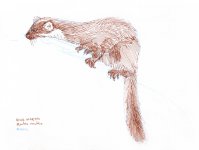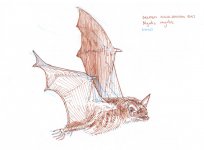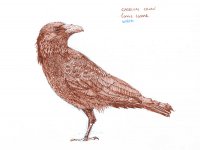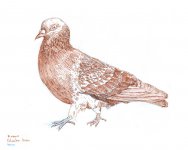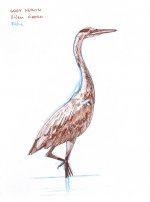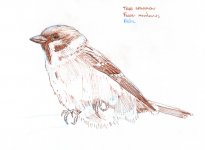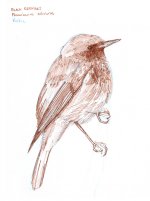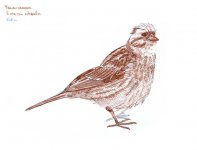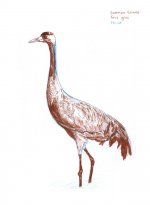Birds for an Architecture Student - Lea Valley Birds - Pylon Aviary
Hi Bird Forumites,
I am an architecture student developing a project for an aviary based around the theme of urban ecology. A central idea is that organisms can be classified into 3 broad groups: Weeds, adaptive generalists which flourish in human dominated environments; relics, specialized for a particular environment in which they will survive if actively 'conserved', and ghosts, which clash with human development and are likely to be extinct except for in zoos. (read more about 'weeds' here: http://www.churchofeuthanasia.org/e-.../weedplan.html - its a weird site but the article was originally published in Harpers)
My idea is that the aviary can illuminate this idea spatially and architecturally, treating each group differently according to their needs and our goals. For example, the ghosts may need enclosure and protection, while relics might be provided with access to habitats in which they can nest, with the overall goal of increasing the wild population.
I have decided to site the aviary in East London's Lea Valley because of its industrial past, because its current neglected state with patches of land left to grow undisturbed offers ready-made habitat, and because its proximity to the Olympic village could create interesting juxtapositions of new and old development.
One of my goals is to draw parallels between the 'ecosystem' of industry and infrastructure, and the biological ecosystem. I have chosen the electricity grid as a starting point - with pylons having a particular attraction.
What I hope to do, in the end, is use computer tree simulations to design structures that are highly specialized to individual bird species, so I will probably be looking at a small number of species and their habitats in great detail.
Can you point me towards information about the birds of the Lea Valley (past and present) that I might want to investigate? Can you think of example birds that might fit into the three main categories (weed, relic, ghost?). Are there any programmes to re-establish bird species that left the area during industrialization, or studies showing the re-emergence of species following de-industrialization?
I've spoken to the Curator of Birds at London Zoo, who understood what I meant by 'weedy' organisms, but his specialism was exotic birds, rather than those native to England. He pointed me to the British Trust for Ornithology, but so far they haven't been able to help.
What do you think? I'm interested in your input on all aspects of this project - I think it could be very valuable and from a completely different point of view to my own.
Adam
PS. Attached is a photo I took on a recent walk through the valley. Its a birds nest in the upper reaches of a pylon. I also filmed birds flocking from one pylon to a neighbouring one, but with my limited bird knowledge I couldn't identify them. I'll post a picture tomorrow.
Hi Bird Forumites,
I am an architecture student developing a project for an aviary based around the theme of urban ecology. A central idea is that organisms can be classified into 3 broad groups: Weeds, adaptive generalists which flourish in human dominated environments; relics, specialized for a particular environment in which they will survive if actively 'conserved', and ghosts, which clash with human development and are likely to be extinct except for in zoos. (read more about 'weeds' here: http://www.churchofeuthanasia.org/e-.../weedplan.html - its a weird site but the article was originally published in Harpers)
My idea is that the aviary can illuminate this idea spatially and architecturally, treating each group differently according to their needs and our goals. For example, the ghosts may need enclosure and protection, while relics might be provided with access to habitats in which they can nest, with the overall goal of increasing the wild population.
I have decided to site the aviary in East London's Lea Valley because of its industrial past, because its current neglected state with patches of land left to grow undisturbed offers ready-made habitat, and because its proximity to the Olympic village could create interesting juxtapositions of new and old development.
One of my goals is to draw parallels between the 'ecosystem' of industry and infrastructure, and the biological ecosystem. I have chosen the electricity grid as a starting point - with pylons having a particular attraction.
What I hope to do, in the end, is use computer tree simulations to design structures that are highly specialized to individual bird species, so I will probably be looking at a small number of species and their habitats in great detail.
Can you point me towards information about the birds of the Lea Valley (past and present) that I might want to investigate? Can you think of example birds that might fit into the three main categories (weed, relic, ghost?). Are there any programmes to re-establish bird species that left the area during industrialization, or studies showing the re-emergence of species following de-industrialization?
I've spoken to the Curator of Birds at London Zoo, who understood what I meant by 'weedy' organisms, but his specialism was exotic birds, rather than those native to England. He pointed me to the British Trust for Ornithology, but so far they haven't been able to help.
What do you think? I'm interested in your input on all aspects of this project - I think it could be very valuable and from a completely different point of view to my own.
Adam
PS. Attached is a photo I took on a recent walk through the valley. Its a birds nest in the upper reaches of a pylon. I also filmed birds flocking from one pylon to a neighbouring one, but with my limited bird knowledge I couldn't identify them. I'll post a picture tomorrow.




